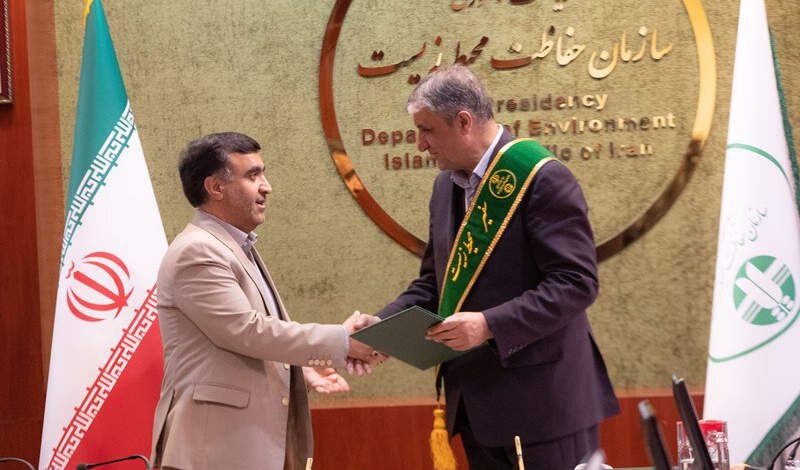Monday 13 March 2023 - 22:00
Story Code : 404732
Nuclear technology at the service of environmental protection
DOE Chief Ali Salajeqeh and AEO Chief Mohammad Eslami inked the agreement on Sunday.
The main goal of the 3-year MOU is the effective management of environmental protection at the national level through the use and development of nuclear technology in environmental protection.
Improving environmental protection programs through creating convergence and synergy, and using clean energy in order to achieve a healthy and sustainable environment is among other goals of the agreement.
�We have a great need for clean energy in the country and we try to use all possible capacities in this field. Nuclear energy is one of the forms of clean energy that is used for peaceful purposes,� Salajeqeh said.
�The world is moving towards a zero-carbon policy, and we must replace fossil fuels with new sources of energy to reduce carbon emissions.
Therefore, the development of nuclear energy plays an effective role in reducing air pollution as well as water and soil resources.�
He went on to say that climate change has put biodiversity and genetic resources at risk. �We should try to preserve the environment as an intergenerational heritage by creating a synergy.�
Preservation of natural resources, biodiversity, and wildlife, dealing with air pollution and destruction of soil and water resources, and waste management are among the capacities, he pointed out.
Eslami, for his part, said that the main purpose of signing the agreement was to put nuclear technology at the service of the environment in order to reduce environmental harm.
In December 2022, Rouhollah Naqdipour, the secretary of the strategic council of the Department of Environment, said a roadmap for environmental protection has been developed.
The document presents 13 national macro strategies and 46 cross-sectoral measures for five main environmental challenges, he said, IRNA reported.
The 7-chapter book also suggests reforms for systematic purposeful solutions and policies to solve environmental issues including the water crisis, he further explained.
He listed the five major environmental challenges of the country as the imbalance between water resources and consumption leading to drought, soil erosion, waste and sand and dust storms, air pollution in metropolises, destruction of biodiversity and genetic resources, and imbalance between the environment and industrial and civil development.
Statistics show that the growth rate of protected areas in Iran is higher than in many countries so the number of protected sites in Iran has risen about 37 times compared with 26 times on average in the world from 1962 to 2018.
To preserve the existing biodiversity over the wide geographic expanse of Iran, four types of areas have been designated for preservation and protection, including, national parks, wildlife refuges, protected areas, and natural national monuments. In 1997, the Department of Environment (DOE) held supervision over 7,563,983 hectares of such areas.
By TEHRAN TIMES
# Tags











